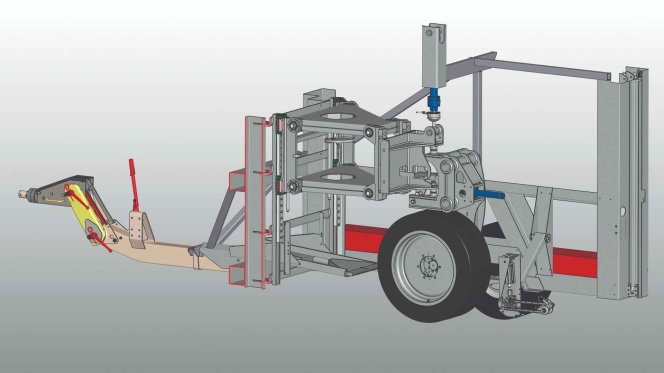
By Ralf Berres and Dr Dieter Barz
The Industry Grip Testing System (IGTS) is a brand new measurement trailer, developed as a joint project between tyre maker Michelin and solution provider Altracon. It comprehends the knowledge of both tyre and measurement equipment experts and represents the technical feasibility in terms of tyre characteristics measurement on the road with state of the art ease of use.
 The Altracon Industrial Grip Trailer System IGTS consists of a modular concept design. One development target was to keep the system variable for existing as well as for future test- and measurement tasks and to adapt to any kind of on the road testing requirement.
The Altracon Industrial Grip Trailer System IGTS consists of a modular concept design. One development target was to keep the system variable for existing as well as for future test- and measurement tasks and to adapt to any kind of on the road testing requirement.
The IGTS grip testing trailer is built for straight dry and wet-braking tests. The trailer’s frame and wheel load station are optimised by FEM technology for highest stiffness and lowest deformation.
Design features
The trailer is made of a stiff frame with independent wheel suspension for the left and right wheels and is equipped with a variable towing bar to level different heights of the vehicles hitches. It may be pulled from any drawing vehicle with sufficient trailing load and engine torque for the measurements, no matter if it is a Pick-up, SUV, or truck. The IGTS hosts an independent test wheel load station. It is placed in the center of the trailer between the carrying wheels and presses the test wheel to the road surface on a path between the trailer wheels. The test-wheel load station is equipped with a high-performance disk brake to apply the braking torque/ force to the test wheel for grip testing. All functions are independent from the drawing vehicle while it carries all the necessary supplies on board except of the water tank, which is carried by the drawing vehicle.
The concept design is prepared to be extended with dynamic test capability with camber and slip variation, which will be included in the IGTS “Force and Moment” trailer. The test wheel load station and its media supply and control system may also be built into other vehicles such as busses or trucks, which must be prepared accordingly as a matter of course.
The trailer is equipped with a modular undercarriage set-up. The basic trailer requires only one axle to perform grip measurements, which are done straight rolling/ braking. The directional stability of the trailer is enhanced by two additional lift axles, one in front and one behind the carrying axle of the trailer, to run dynamic tests with the IGTS on the road when it is equipped with camber and slip variation functionality. These lift axles are only used during the actual measurement and will be lifted for taxiing and transportation. Both axles use smaller wheels than the carrying axle and also have independent wheel suspension. The wheels of the lift axles are moreover actively steered to balance side forces which may be generated during testing. The drive performance control system adjusts the trailers’ Eigen modes in vertical and lateral direction and significantly improves the directional stability.
The IGTS test wheel load station is light-weight to reduce the effect of mass of inertia. It is equipped with an active wheel load control while previous test trailers just use dead weights. A fully automatic and adjustable damping control at the testing axle adjusts the Eigen mode and cares for smooth running and best precondition for the measurement on any road. The high-performance long-life wheel spindle is specially designed for lowest rolling resistance.
Power supply is done by batteries, which are loaded by generators. These are inbuilt to the carrying axle at each side. The power supply engineering may be designed as 48V DC as well as 240/400 1- or 3-phase AC with converter for special applications.
Compressed air is supplied from an inbuilt compressor with air tank for inflation pressure adjustment or control as well as for connection of air driven tools.
Hydraulic supply from an inbuilt hydraulic pump system with accumulator tank enables dynamic load, brake, and steering function. The high-speed characteristics of the hydraulic supply is suitable to simulate braking performance (ABS) and quick release brake pressure at the test wheel. It allows to run up to 8 repeatable tests per 100 m in a sequence in combination with the high-performance brake-control techniques.
The optional water management system is integrated and allows controlled watering of the test-wheels path. The nozzles are placed in front of the test wheel. Their watering width is adjustable to 420mm and their watering height is controlled by flow-measurement, which is adjustable between 0 and 4mm at maximum speed of 100 km/h. The system is operating with continuous water flow for quickest reaction times. It is pressure-controlled and switches between circulating and spraying mode without any time lag and pressure loss.
Measurements
The trailer speed measurement is precisely done directly at both carrying wheels. Different speeds measured at the left and right side indicate deviation from the straight path. The alignment of the drawing vehicle and the trailer is moreover precisely measured with a laser-based alignment measurement system if the IGTS is equipped with camber and slip variation functionality. Inputs from both, the speed and the alignment measurement system, will generate correction of the directional stability by the control system.
The wheel speed of the test-wheel is precisely measured directly at the test-wheel spindle with an encoder, which also gives information about the braking process of the test wheel.
Forces and moments at the test wheel are synchronously measured in x- and z-direction with 1-component sensors. A multi-component force and moment dynamometer, which may use strain gauge or quartz technology, is optionally available as an alternative. It is integrated to the wheel spindle, fully covered and shielded. However, both set-ups are available either independent or together.
All measurements of motion are done with precision sensors, using various technologies, depending on the entire parameter. For referencing, speed and location recording different control and measurements techniques are used as well.
Ergonomics
The test-wheel carrier design enables to turn the wheel by 90° around its vertical axle for wheel exchange and service. This allows the operator to access the wheel fixation from the back of the trailer.
SUMMARY OF DISTINCTIVE FEATURES
- Light-weight wheel suspension to reduce the mass of inertia
- Low rolling resistance high-performance long-life wheel spindle
- Measurement systems as single axle or with dynamometer technics
- High precise load control designed for equalised axle weight
- Eigen-mode adjustment by fully automatic and adjustable damping control at the testing axle
- Brake system with high speed characteristics hydraulic supply to simulate braking performance (ABS) and quick release brake pressure
- High performance braking control system
- Test sequences with up to 8 tests per 100 m in a row.
- Modular trailer undercarriage for one or three axle systems for characteristics testing including drive performance measurement and control technics to adjust the trailers’ Eigen-mode in vertical and lateral direction
- Integration in existing testing environment and customised data solution
- Different control and measurement technics for referencing, speed and position recording
- Optional water-levelling system to apply an adjustable water film in front of the test-wheel in case of a missing road watering system
Fornnax Launches World’s Biggest Secondary Shredder
- By TT News
- October 17, 2025
Fornnax Technology Pvt Ltd has introduced the R-MAX3300, a new secondary shredder presented as the largest in its category. The official launch occurred on 14 October 2025 at the prominent IFAT India environmental technology exhibition in Mumbai. The unveiling ceremony was a significant industry event, attended by numerous leaders from the cement and waste management sectors. Key figures present included executives from GEPIL India, Zigma Global, Prism Johnson Ltd, Shree Cement Ltd and Mangalam Cement Ltd.
This shredder is positioned as a major technological advancement for India's recycling and waste processing infrastructure. It is designed to provide a powerful solution for Cement Alternative Fuel and Resource plants as well as waste-to-energy facilities. While the established R Series shredders are known for processing high-density materials such as tyres and cables, the R-MAX3300 is specifically engineered for low-density waste streams. These targeted materials include Municipal Solid Waste, Commercial and Industrial waste, Construction and Demolition debris, bulky items, legacy waste dumps and wood waste.
The machine integrates advanced shredding technology to efficiently produce Refuse Derived Fuel and Solid Recovered Fuel, achieving an optimal output particle size between 30 and 50 millimetres. Its construction emphasises durability, operational versatility and high performance to meet the demands of large-scale industrial applications requiring consistent fuel quality.
The R-MAX3300 is built for high-volume processing of pre-shredded or coarse materials. Its applications are expected to be crucial in producing solid recovered fuel, preparing waste for composting and reducing waste volume for more cost-effective transportation. The shredder is anticipated to be a key asset in Integrated Waste Management Projects and bio-mining operations across India and international markets.
Jignesh Kundaria, Director and CEO, Fornnax Technology, said, “The R-MAX3300 represents a monumental leap forward in our vision to become a global leader by 2030 in recycling technology through innovation. With the rising challenges of waste management in India and globally, this machine is not just a product; it’s a powerful tool for change. We engineered it to handle the most difficult waste streams with unparalleled efficiency, turning what was once considered unusable waste into a valuable resource. It directly addresses the urgent demand for effective, large-scale shredding technology that can support cement kilns and waste-to-energy facilities in achieving the desired output. Our commitment goes beyond just selling machinery; it's about empowering our customers to achieve lasting efficiency, sustainability and growth. We see ourselves as a trusted partner who stands beside them at every step – from technology deployment to ongoing support, ensuring they can rely on Fornnax not only for performance but also for consistency, dependability and long-term value.”
Siemens And rFpro Enhance Tyre-Road Simulation Technology
- By TT News
- October 05, 2025
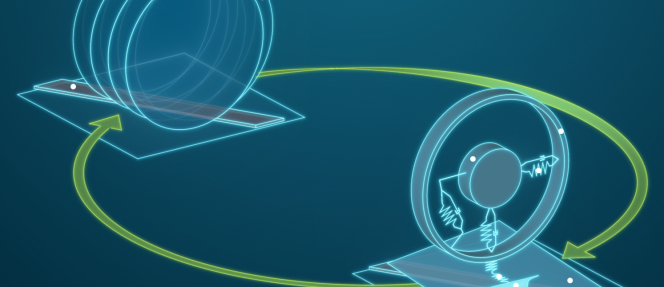
A new collaborative development from rFpro and Siemens Digital Industries Software (Siemens) introduces a significant advancement in simulation technology. This innovation seamlessly connects Siemens' Simcenter Tire software with rFpro's TerrainServer platform, which creates highly precise, millimetre-accurate digital replicas of real-world road surfaces. Through this integration, the sophisticated MF-Tyre and MF-Swift models within Simcenter can directly access and process the detailed terrain data. This allows for the calculation of highly realistic tyre forces and moments, which is a critical factor for virtual testing in both the automotive and motorsport industries.
The partnership was built on ensuring the solution's reliability across diverse applications, from desktop engineering to cloud-based and real-time simulator environments. This development reinforces rFpro's commitment to an open and agnostic simulation platform, providing users with the flexibility to select their preferred models and tools. This strategy of integrating best-in-class third-party technologies protects customer investments and increases their return, as digital assets can be utilised across different departments with varying modelling requirements.
The combined power of TerrainServer's high-fidelity road models and Simcenter Tire's advanced modelling enables engineers to conduct in-depth evaluations of vehicle dynamics, including handling, ride quality and grip. Performance can be assessed objectively through data and subjectively using driver-in-the-loop simulators. This comprehensive approach allows for a more informed development process, leading to better-validated designs before physical prototypes are built, thereby saving substantial time and cost. The new interface is now commercially available and is already being widely adopted by OEMs and Tier 1 suppliers globally for programmes focused on ride comfort and vehicle dynamics.
Nick Harrison, Development Director, rFpro, said, “We aim to be the most open simulation environment on the market and this integration is another key example of this. Our platform-agnostic approach means engineers can pick and choose the best tools for the job. They have the ability to combine specialised technologies from different vendors to create the most effective simulation solution for their particular development challenge.”
Willem Versteden, Senior Technical Product Manager, Siemens Digital Industries Software, said, “Tyre behaviour depends heavily on the surface it’s interacting with. By integrating our Simcenter Tire software with rFpro’s TerrainServer, engineers can now simulate that interaction with a much higher level of detail. It’s a valuable step forward for users demanding greater accuracy in virtual vehicle development.”
- Continental
- nobilia
- Smart Kitchen
- Evolution of Senses
- AUMOVIO Engineering Solutions
- Surface Technology
Continental and nobilia Forge Future Of Living With Smart Kitchen Concept
- By TT News
- September 29, 2025
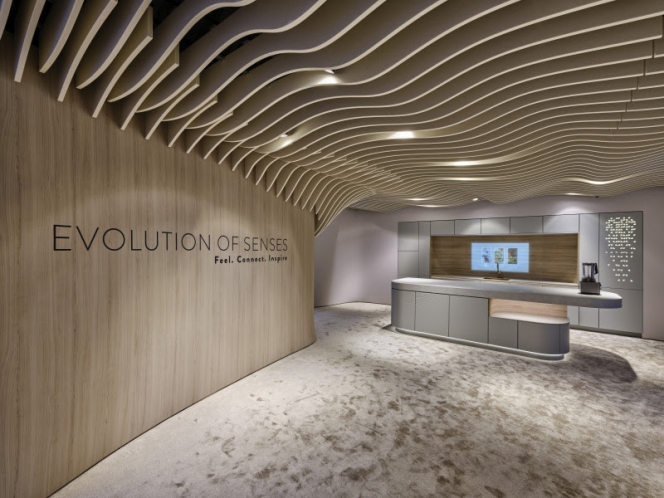
A groundbreaking collaboration between technology giant Continental and kitchen manufacturer nobilia is presenting a new vision for the kitchen, transforming it from a utilitarian space into an intelligent and responsive living environment. This joint innovation project, set to debut at nobilia’s international exhibition in Verl, harnesses the material science expertise of Continental’s ContiTech group, drawing directly from its advanced work in automotive interiors.
The concept, titled ‘Evolution of Senses’, showcases how functional materials can redefine everyday experiences through comfort, safety and seamless design. The core of this innovation lies in revolutionary translucent surfaces. These specialised materials are light-permeable and serve as a host for printed electronics, enabling an array of hidden functions. This technology allows a kitchen countertop to discreetly incorporate wireless smartphone charging, create specific heating or cooling zones to keep food and drinks at their ideal temperature and feature touch-sensitive control panels. All these elements remain completely invisible when not in use, preserving a clean aesthetic. This principle of surface technology is also demonstrated in a kitchen niche, where a screen is hidden behind a translucent film with a wood-like finish, only appearing when activated.
The commitment to modern living extends to sustainability, with the use of durable and resource-efficient materials. The chairs, for instance, are upholstered in an artificial leather that is composed of over 90 percent bio-based and renewable raw materials, including organically grown cotton.
Further enhancing the kitchen's intelligence are smart AI features, engineered by AUMOVIO Engineering Solutions. Adapted from Continental's automotive technology, these systems can recognise food items, offer recipe recommendations and provide nutritional insights. They also contribute to family safety by issuing alerts for potential hazards like boiling water or objects that might be dangerous for children.
While some of these technologies are production-ready and others are still in the prototype stage, they collectively offer a concrete and exciting preview of the future, where the home environment is both intuitively connected and sustainably crafted.
Ralf Imbery, Head of Design, Marketing and Strategy for Continental’s global surface materials business, said, “For many decades, our materials and technologies have shaped modern living spaces – from vehicle interiors to home furniture. With this concept kitchen, we’re showing how our expertise can be transferred to new requirements: for greater functionality, user-oriented design and technology in everyday life. For us, cooperation projects of this kind are an important strategic tool that allow us to test innovations at an early stage and, together with partners, develop new perspectives for future living environments.”
Florian Degenhardt, Head of Innovation, nobilia, said, “The collaboration with Continental is a real game-changer. It enables us to create intuitive surfaces that respond to the user while at the same time preserving the elegant design of modern kitchens.”
NASA Launches USD 155,000 Challenge for Revolutionary Lunar Rover Wheels
- By TT News
- September 09, 2025
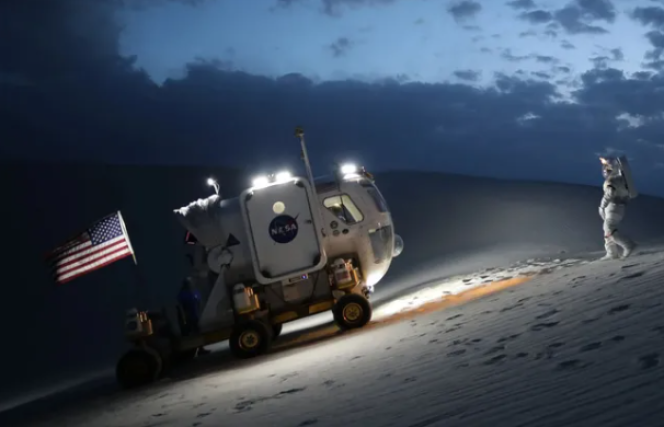
NASA has launched a three-phase competition offering USD 155,000 in prizes to develop next-generation wheels for lunar rovers, as the US space agency prepares for sustained exploration missions to the Moon’s surface.
The “Rock and Roll with NASA Challenge” seeks lightweight, durable wheel designs capable of traversing the Moon’s harsh terrain of razor-sharp regolith whilst maintaining performance in extreme temperature variations and carrying substantial cargo loads at higher speeds.
The competition addresses critical mobility challenges facing future lunar missions, where traditional rover wheels have struggled with the Moon’s abrasive surface materials and temperature extremes that can plummet to minus 173 degrees Celsius during lunar nights.
“The next era of lunar exploration demands a new kind of wheel – one that can sprint across razor-sharp regolith, shrug off extremely cold nights, and keep a rover rolling day after lunar day,” NASA stated in announcing the challenge.
The programme unfolds across three distinct phases. Phase 1, which opened on 28 August and runs until 4 November 2025, will reward the best conceptual designs and analyses. Phase 2, scheduled for January through April 2026, will fund prototype development. The final phase in May-June 2026 will test leading designs through live obstacle courses simulating lunar conditions.
For the concluding phase, NASA will deploy MicroChariot, a 45-kilogram test rover, to evaluate top-performing wheel designs at the Johnson Space Centre Rockyard facility in Houston, Texas. The testing ground will simulate the challenging lunar terrain that future missions must navigate.
The competition remains open to diverse participants, from university student teams and independent inventors to established aerospace companies, reflecting NASA’s broader strategy of engaging private sector innovation for space exploration technologies.
NASA mobility engineers will provide ongoing feedback throughout the competition phases, offering participants insights from the agency’s extensive experience in planetary rover operations, including successful missions to Mars.
The challenge comes as NASA intensifies preparations for the Artemis programme, which aims to establish a sustained human presence on the Moon and serve as a stepping stone for eventual Mars exploration missions.
Current lunar rover designs have faced limitations in speed, cargo capacity, and durability when operating across the Moon’s challenging surface conditions, creating demand for breakthrough mobility solutions that can support extended surface operations.
The competition timeline positions Phase 2 prototype funding to commence in January 2026, allowing successful Phase 1 participants several months to refine their concepts before advancing to hardware development.


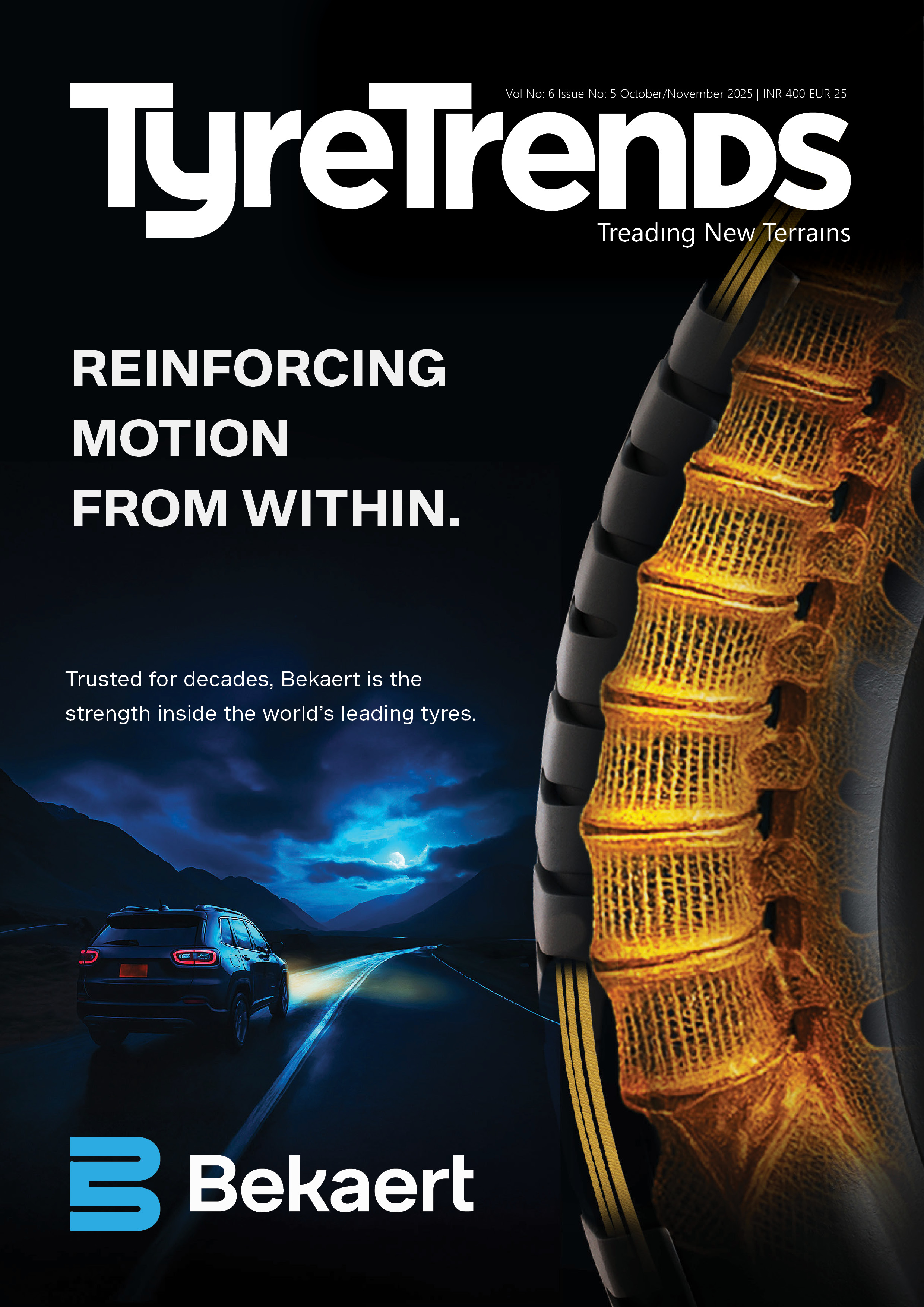

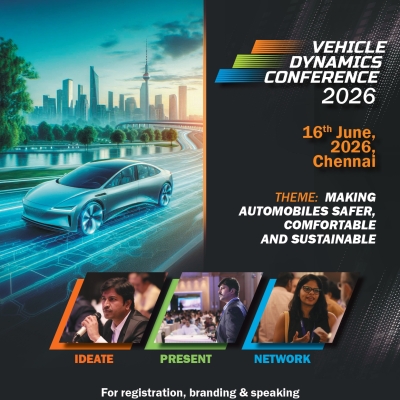

Comments (0)
ADD COMMENT